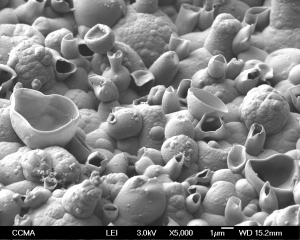Welcome to the
Nature Inspires Creativity Engineers Lab
– Côte d’Azur University, France
This Research Unit in Evolution (URE CA01) was created on January 1, 2017, by the President of the University of Nice Sophia Antipolis, and validated by its Board of Directors, with the aim of establishing a research structure dedicated to innovation, primarily through biomimicry and bio-inspiration.
The missions of this structure are to develop innovation through scientific research and the production of specific knowledge. Our laboratory is internationally known in the synthesis and development of organic and organic-inorganic hybrid materials. Our knowledge allows going from the molecular conception toward the construction of surface with specific properties in different fields: NanoTech, SmartTech, BioTech.
Direction : Dr. Frederic GUITTARD
Up-to-date (click on the link below):
List of Publications
List of Former PhD students
List of equipments

